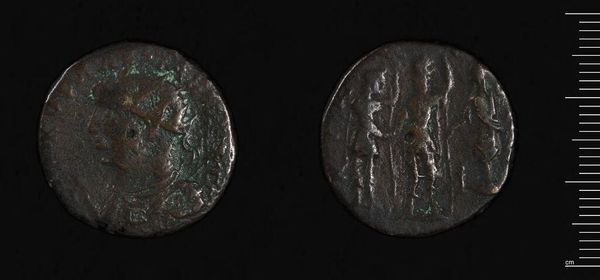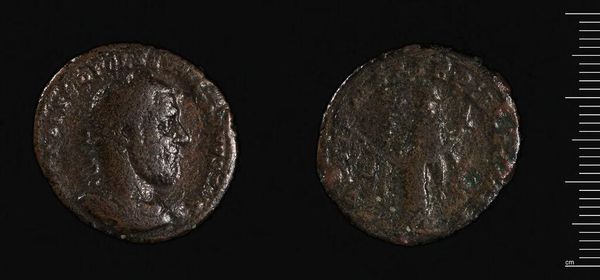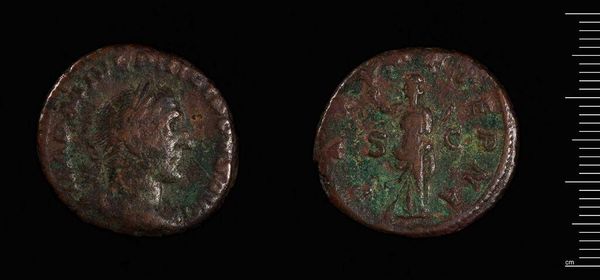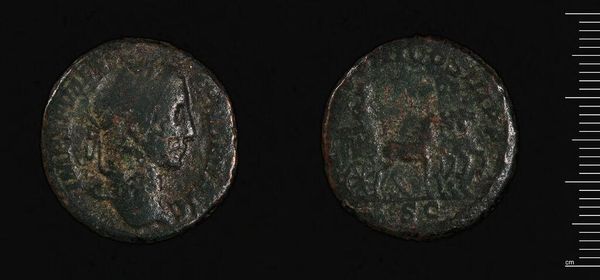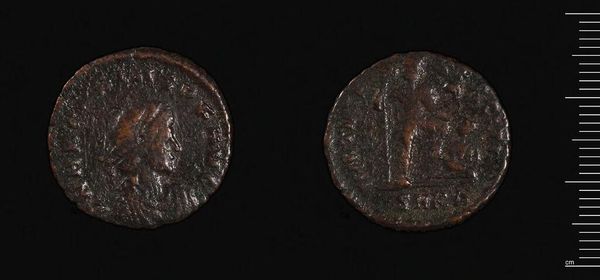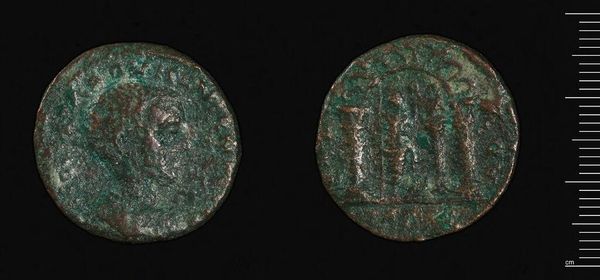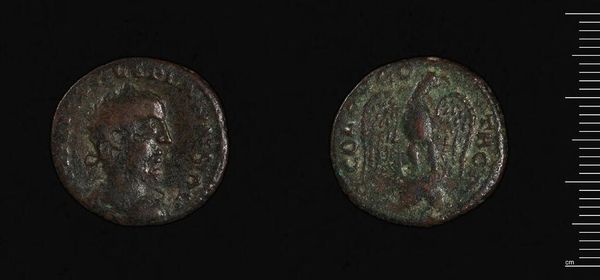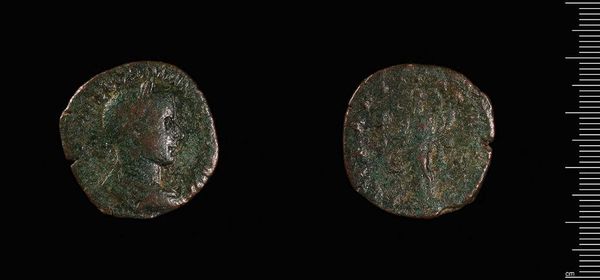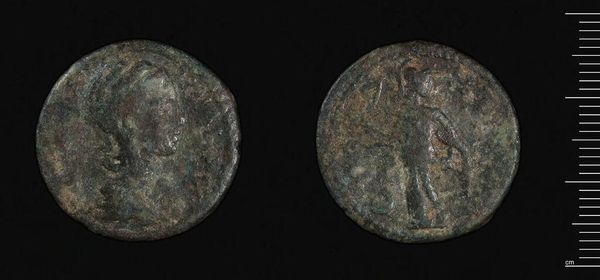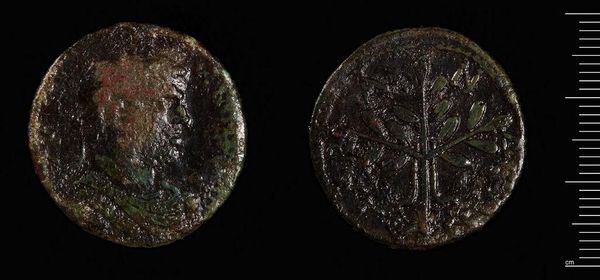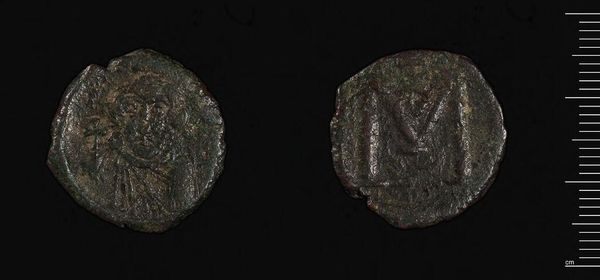
Dimensions: 11.27 g
Copyright: CC0 1.0
Curator: Here we have a dupondius of Lucius Verus, part of the Harvard Art Museums collection. Editor: It's incredible how such a small, worn object can still evoke a sense of power. The metal looks almost bruised with age. Curator: Indeed. These coins were tools of political messaging. The image of Verus, a co-emperor with Marcus Aurelius, would have circulated throughout the Roman Empire, reinforcing his authority. Editor: I'm struck by how the image, though stylized, connects us to a real person and the systems of power he inhabited. How did the act of possessing this image shape people's relationship to the Roman state? Curator: The coin served as a constant reminder of Roman power, a tangible link between the individual and the Emperor. It's a propaganda piece but also a common item. Editor: These objects tell a story about the social and political structures, but also, crucially, about identity, and the construction of Roman masculinity. Curator: Thinking about its circulation, we must think about how such imagery reinforces hierarchies. Editor: Absolutely, the coin's value extends far beyond its monetary worth, offering insight into the social and political dynamics of its time. Curator: Exactly. It's a reminder that even the smallest objects can hold immense historical weight.
Comments
No comments
Be the first to comment and join the conversation on the ultimate creative platform.
